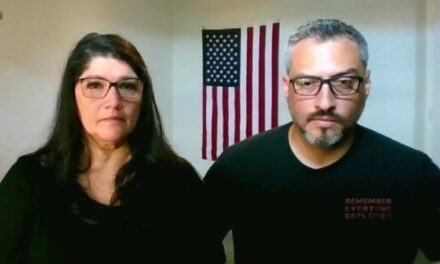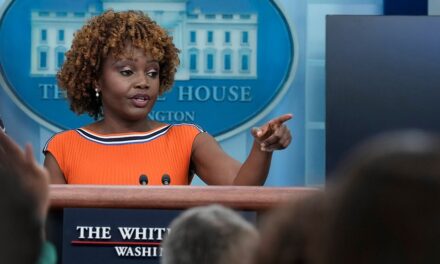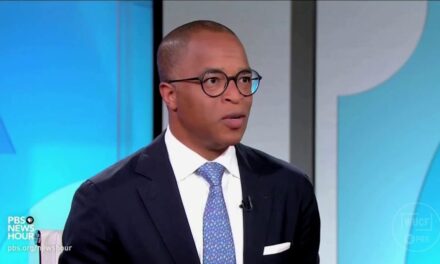In the ever-evolving landscape of American media, there has been ongoing scrutiny concerning the representation of diverse political viewpoints within news organizations, particularly those with a liberal-leaning stance. The question arises—where are the pro-Trump dissenting voices in these media establishments?
This inquiry isn’t merely about partisan bias but delves into the broader implications of media diversity and the impact on public discourse. As the nation remains deeply divided along political lines, the representation or underrepresentation of certain views in mainstream media continues to be a topic of considerable debate.
For several years now, the focus has lingered on the polarization within media outlets, with many accusing prominent liberal platforms of sidelining conservative viewpoints. This has only intensified in the wake of former President Donald Trump’s rise to political prominence, with his policies and rhetoric creating a stark division in public and media opinions.
The liberal media, which traditionally commands a significant audience base in the urban and coastal regions of the United States, is often criticized for an ideological homogeneity that excludes dissenting political perspectives, especially those supportive of Trump and his administration. The call for a wider range of voices, particularly those of the pro-Trump variety, raises questions about the overall mission and ethical responsibilities of the media.
Critics argue that for any media organization to maintain credibility and trust, it must foster a degree of pluralism in its opinion sections and reporting. This is not about giving credence to every perspective but allowing space for legitimate political discourse that reflects the diverse views of the American populace.
The perceived absence of pro-Trump voices in places like The New York Times, CNN, and other similar platforms suggests a gap in narratives that can alienate a large segment of the population. These organizations often counter such accusations by pointing to their inclusion of a select number of right-leaning commentators and op-ed writers. However, detractors remain unconvinced, arguing that these contributions are insufficient or not prominently featured.
Furthermore, there is a concern that failing to include diverse political ideologies might lead to an echo chamber effect, where audiences are only exposed to viewpoints they already agree with, thus deepening societal divides. This lack of exposure to conflicting viewpoints could potentially sharpen polarization and misunderstandings across different political and social spectrums.
On the other hand, supporters of liberal news outlets argue that these organizations have a mission to report what they perceive as factual and truthful. They are wary of giving platforms to rhetoric they consider misleading or factually incorrect. This stance becomes especially relevant in discussions about misinformation, election-related conspiracies, and unfounded claims about voter fraud—topics that have been prominent among some pro-Trump circles.
Moreover, the role of journalism as a check on power is highlighted by those who advocate for rigorous scrutiny of Trump-era policies and narratives. They argue that media organizations have a duty to critically examine and question the narratives that come from all political entities, including those affiliated with the former president.
Yet, some observers note that the evolution of digital media has altered traditional roles. Social media platforms and a proliferation of alternative news sources have changed how people access information and whom they trust. These digital spaces often reflect a myriad of voices, including staunch pro-Trump advocates, thus diversifying the information ecosystem beyond the mainstream media’s offerings.
This dynamic contributes to the complex nature of today’s media landscape. While platforms like Facebook, Twitter, and various independent news websites offer unfiltered access to a multitude of perspectives, they also present challenges regarding content moderation and the spread of misinformation.
The larger question facing the media industry today isn’t simply whether pro-Trump voices should be more prominently featured, but how the industry can balance inclusivity without compromising journalistic integrity or allowing harmful or unfounded narratives to go unchallenged.
The need for media to evolve and adapt to a changing audience can be observed in hiring practices, guest selection for panels and interviews, and editorial choices. Some outlets have made efforts to incorporate voices from across the political spectrum as part of initiatives aimed at bridging divides. However, the effectiveness and sincerity of these efforts remain topics of debate.
As the national conversation continues to delve into issues regarding media responsibility and representation, the ongoing dialogue about diversity of thought within newsrooms is more relevant than ever. As much as it is about political ideology, it is also about the media’s role in fostering informed citizenship—an ideal that lies at the heart of a functioning democracy.
In conclusion, the question of where pro-Trump dissenting voices are within liberal news organizations encapsulates broader discussions about media bias, diversity of perspectives, and the responsibilities of journalism. As the media industry navigates these challenges, the ongoing discourse serves as a reminder of the critical role news organizations play in shaping public understanding and debate.
































